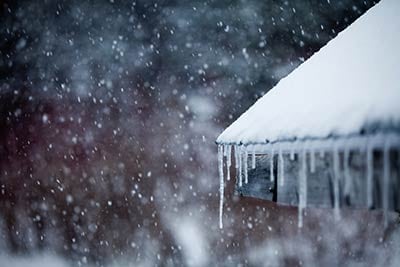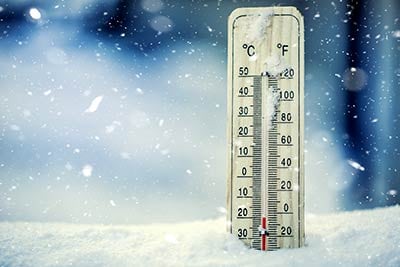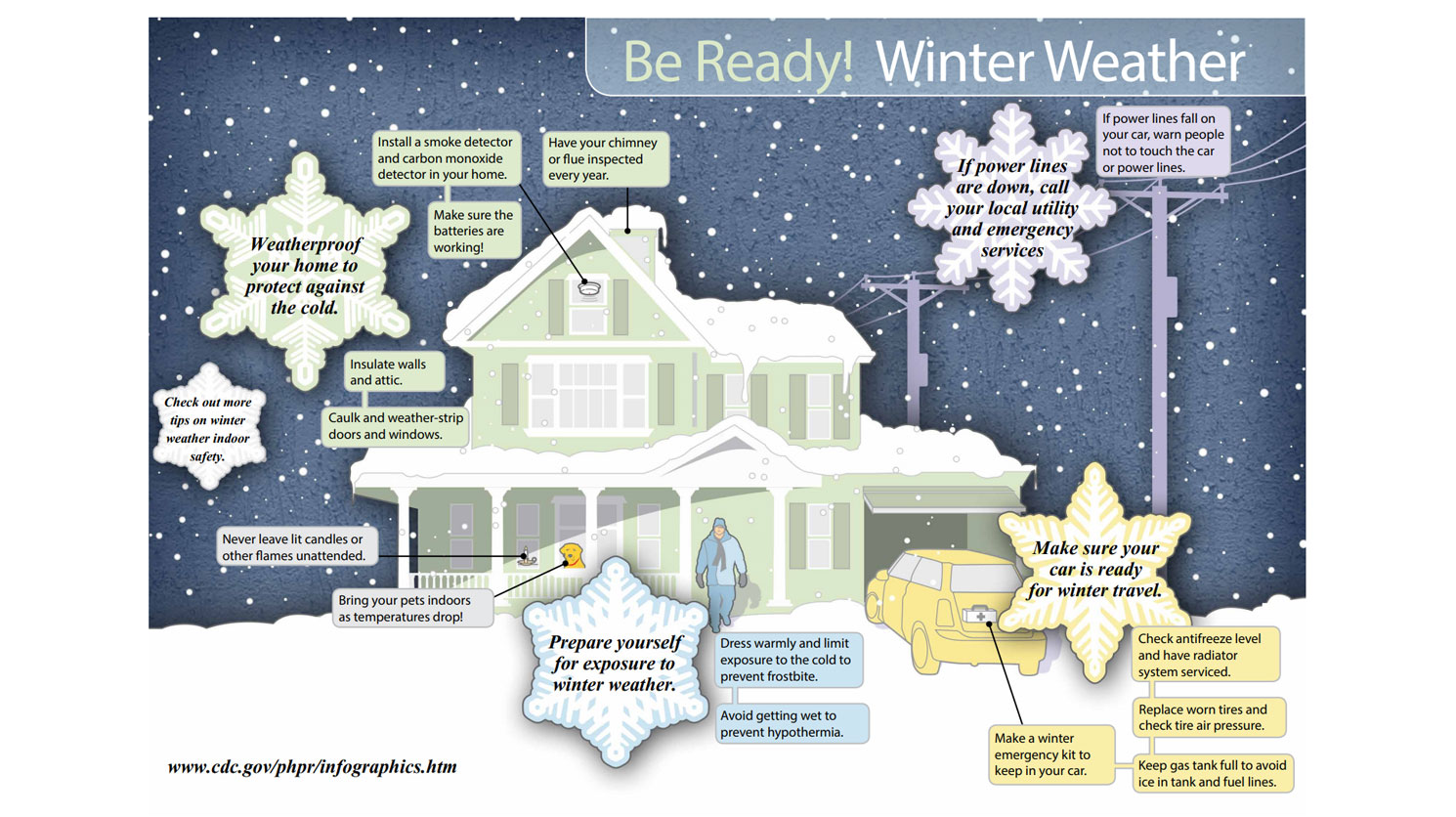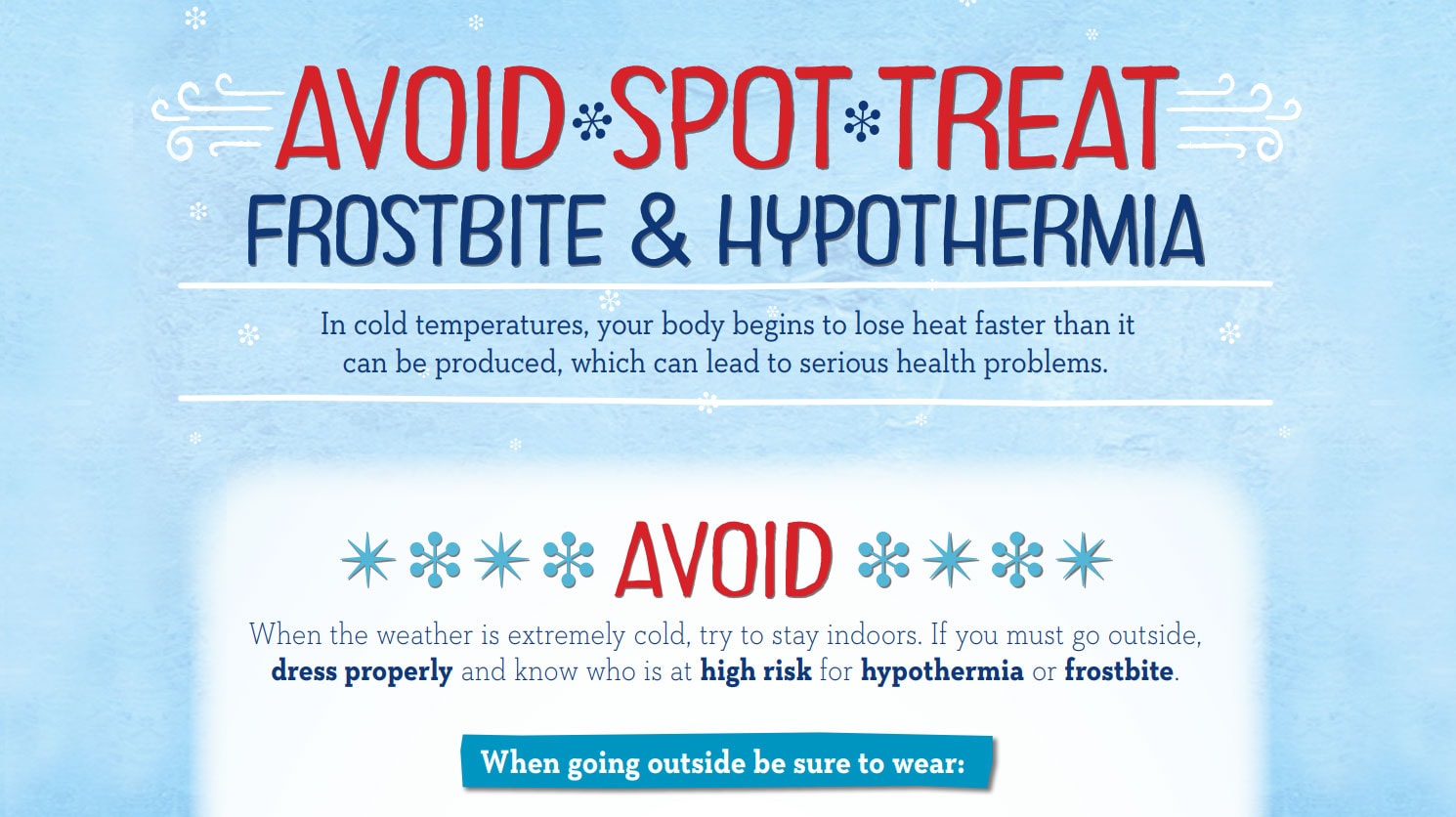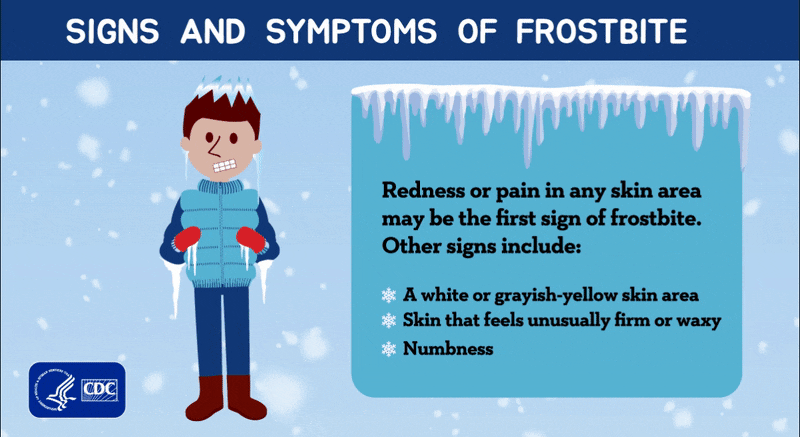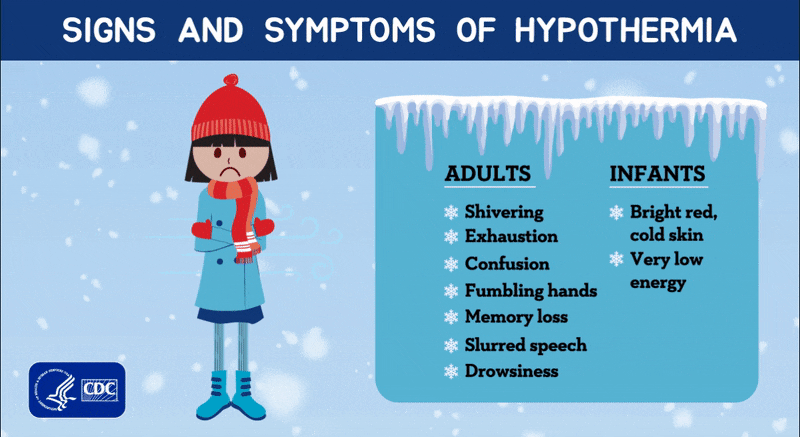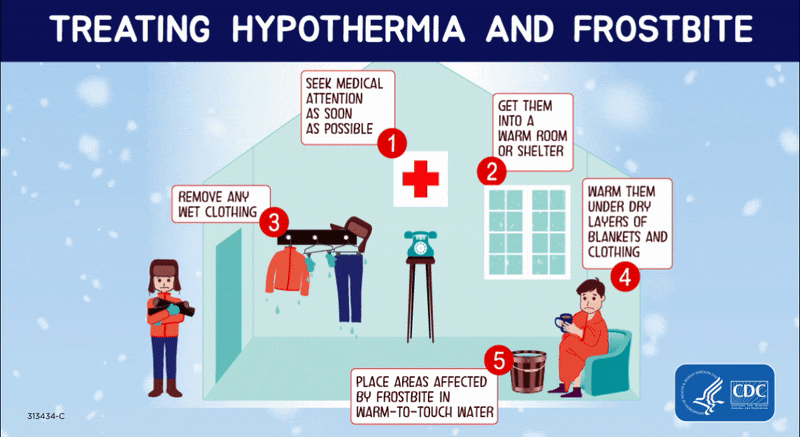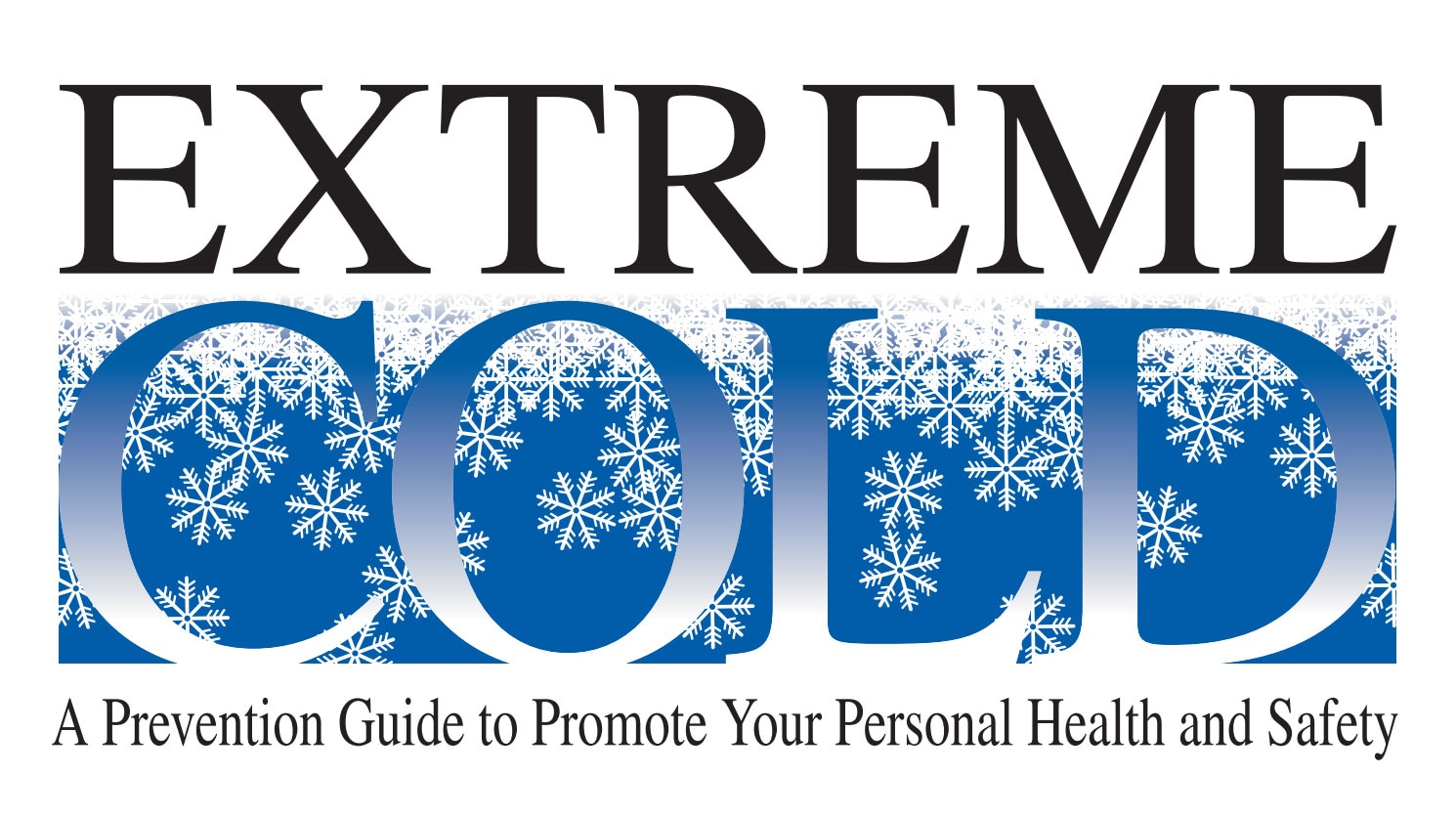Protect Yourself from the Dangers of Winter Weather
Are You Prepared for Winter Weather?
When winter temperatures drop significantly below normal, staying warm and safe can become a challenge. According to a 2014 CDC National Health Statistics Report [PDF – 330 KB], during 2006–2010, about 6,600 U.S. residents died from exposure to excessive natural cold, hypothermia, or both.
What is extremely cold weather? The definition of extreme cold can vary. After all, what is cold to one person may not feel that cold to another. People who live in regions with relatively few days of freezing temperatures are not accustomed to them when they go to colder areas.
Whenever temperatures drop below what feels lower than normal to you—and as wind speed increases—heat can leave your body more rapidly and leave you at risk of health problems.
Extremely cold temperatures are often accompanied by winter storms, so in addition to the risks of the cold, you may also have to cope with power failures and icy roads. Staying indoors as much as possible can reduce the risks of car crashes and falls on the ice, but you may also face indoor hazards. Many homes will be too cold—either due to a power failure or because the heating system isn’t adequate for the weather. When people must use space heaters and fireplaces to stay warm, the risk of household fires increases, as well as the risk of carbon monoxide (CO) poisoning.
NCEH/ATSDR Office of Communication
(770) 488-0700
envhealthmedia@cdc.gov
If you are prepared for the hazards of winter, you will be more likely to stay safe and healthy when temperatures start to fall.
- Winterize your home. Install weather stripping, insulation, and storm windows.
- Get your car ready for cold weather. Service the radiator and maintain antifreeze level; check tire tread or, if necessary, replace tires with all-weather or snow tires. Keep an emergency kit in your car including blankets, food and water, first aid, and other items you may need if you are stranded
- Be prepared for weather-related emergencies, including power outages.
- Prevent CO poisoning. Install a CO detector and check that it has a working battery. Have your heating system checked by a qualified professional. Never use a gas range or oven to heat your home.
- Take precaution when spending time outdoors. Wear appropriate outdoor clothing and be aware of the wind chill factor. Check weather reports, telling someone where you are going to be (if long drive or ice fishing). Always have a fully charged cellphone and carry a portable recharger, if possible
- Be aware of current and forecast weather conditions when planning for travel.
- Learn how to avoid, spot and treat frostbite and hypothermia.
- If you have pets, bring them inside. If you cannot bring them inside, provide adequate, warm shelter and unfrozen water to drink.
Related Links
Before:
Prepare for #winter weather. Learn about #hypothermia and #frostbite, and how to prevent them: https://www.cdc.gov/disasters/winter/staysafe/hypothermia.html
Protect yourself and your family this #winter by learning to recognize the signs and symptoms of #frostbite and #hypothermia, and what to do. https://www.cdc.gov/disasters/winter/staysafe/hypothermia.html
Winter storms and cold temperatures can be dangerous. Learn how you can plan to stay safe and healthy: https://www.cdc.gov/nceh/features/winterweather/index.html
#Winter storms in the forecast? Be ready to keep yourself and your family safe. Get to your destination before the storm hits or adjust your plans. https://www.cdc.gov/disasters/winter/beforestorm/preparehome.html
Winterize your car & make sure you have emergency supplies in the trunk. https://www.cdc.gov/disasters/winter/beforestorm/preparehome.html
Prevent frozen pipes! Open cabinets to let warm air circulate and let water drip from the faucet. https://www.cdc.gov/disasters/winter/beforestorm/preparehome.html
Are you ready for a #winter storm? Make sure to heat your home safely using this quick checklist: https://www.cdc.gov/disasters/winter/beforestorm/preparehome.html
#Winter weather can knock out power lines. Keep flashlights handy & be ready. https://www.cdc.gov/disasters/winter/beforestorm/preparehome.html
Make sure you’re ready for power outages, cold temps, & bad roads. Learn how to stay safe: https://www.cdc.gov/disasters/winter/beforestorm/preparehome.html
During:
Hazardous road conditions due to #snow. Stay on main roads & drive slow… or bundle up & stay home! https://www.cdc.gov/disasters/winter/duringstorm/indoorsafety.html
#Winter safety tip: Follow directions from local officials. If advised to stay off the roads, don’t travel unless necessary. https://www.cdc.gov/disasters/winter/duringstorm/indoorsafety.html
Stranded in your car? Staying in your vehicle could be the safest choice. Follow these tips if you get stuck: https://www.cdc.gov/disasters/winter/duringstorm/indoorsafety.html
Check occasionally to make sure that snow isn’t building up around your car’s exhaust pipe to avoid carbon monoxide poisoning. https://www.cdc.gov/disasters/winter/duringstorm/indoorsafety.html
Pets get cold, too! Keep your furry friends inside to protect them from #winterweather & follow these tips: https://www.cdc.gov/disasters/winter/beforestorm/preparehome.html
Don’t slip and fall this #winter. Make sure you have rock salt and sand so you can get around in slippery conditions. https://www.cdc.gov/disasters/winter/duringstorm/indoorsafety.html
After:
Returning home after a #winter storm? Follow these tips to stay safe during cleanup: https://www.cdc.gov/disasters/cleanup/facts.html
When removing debris after a winter storm or flood, be safe with #chainsaws. Follow the manual & wear protective gear: https://www.cdc.gov/disasters/cleanup/facts.html
After a #winter storm, throw out foods that may not be safe. When in doubt, throw it out! https://www.cdc.gov/disasters/foodwater/facts.html
Hand washing is part of disaster cleanup, too. Wash hands before handling food & whenever you stop working. https://www.cdc.gov/disasters/disease/facts.html
Keep your family safe from carbon monoxide poisoning after a winter storm. Learn how: https://www.cdc.gov/disasters/cofacts.html
